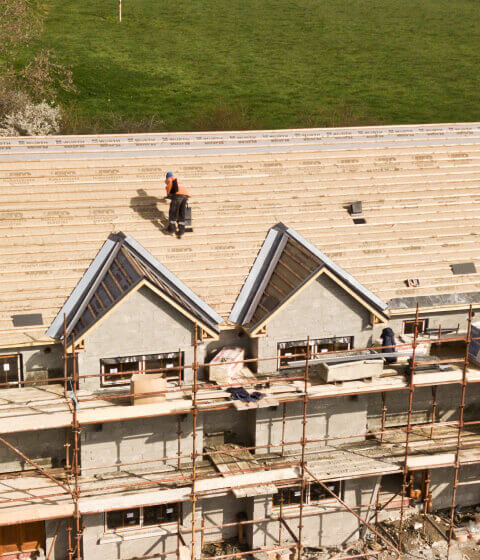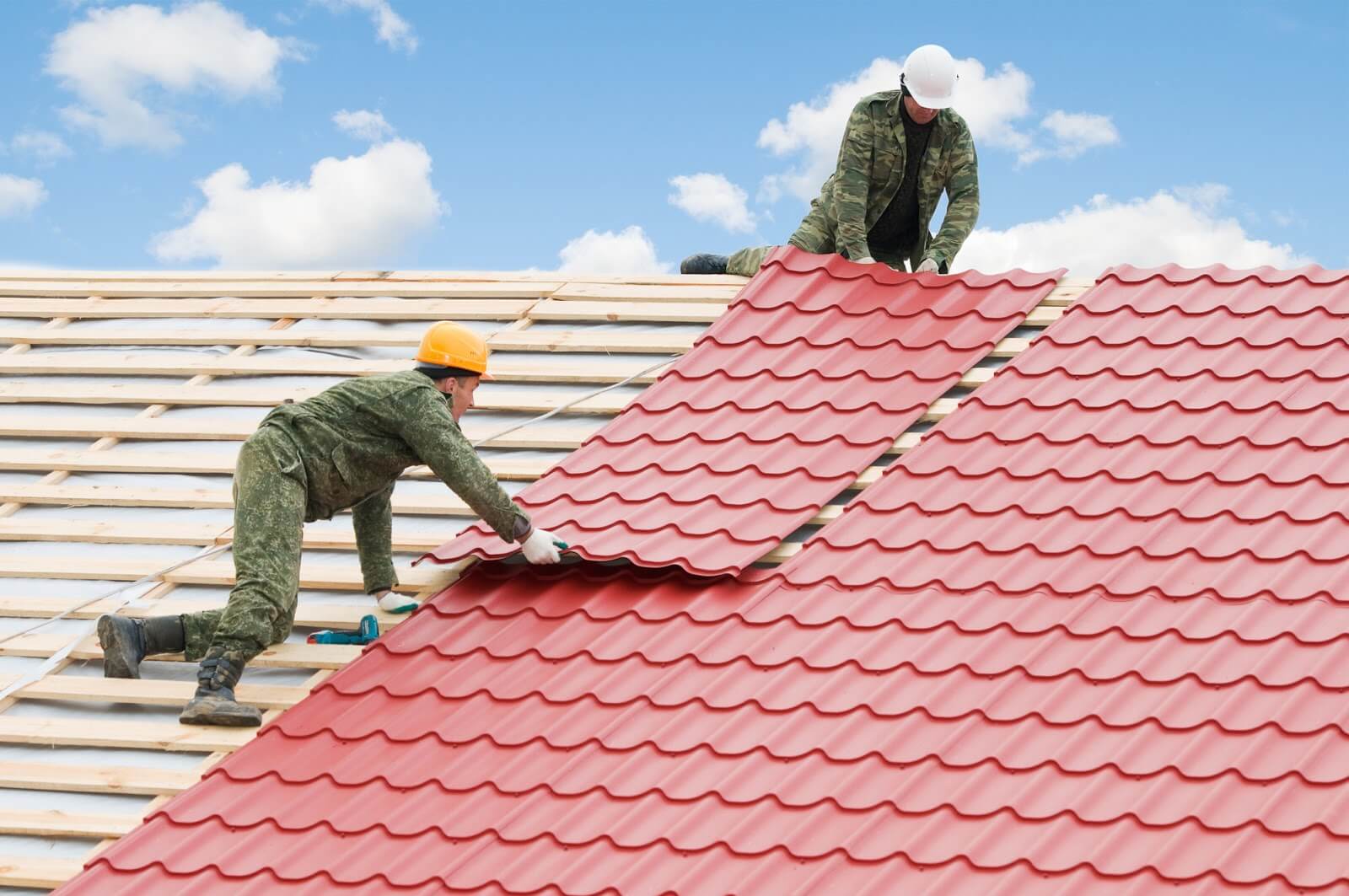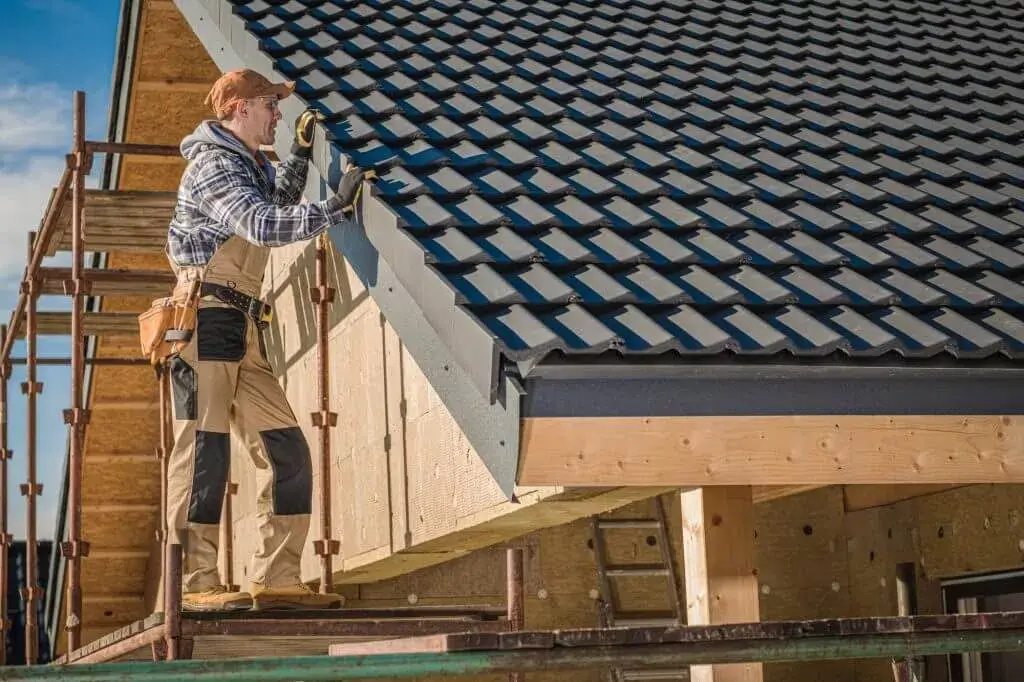Sloping Roof vs Pitched Roof: Which Should You Have?
Pitched roofing systems are named so because of their sloping top surface. This structure is effective in locations that experience heavy rainfall or snow. It is also a cost-effective option. Builders typically use pitched roof structures for warehouses, factories, godowns, theatres, auditoriums, workshops, and hilly locations.
The site’s climatic condition, its span, and the covering material used all contribute to the roof’s sloping mechanism. With that said, the roof’s design should account for all of these considerations.
Types of Pitched Roof Components
These are the types of components considered when setting up a pitched roof.
Span: the horizontal distance between the supports or the internal faces of the walls
Rise: the top-to-bottom distance between the top of the ridge and the wall plating
Ridge: the sloping roof’s apex line
Pitch: the incline measured on the side of the roof going into the horizontal plane
Hip: the ridge formed by the intersection between two sloped surfaces with an interior angle of over 180 degrees
Cleats: small wood blocks found fixed on the ceiling or rafters
Purlins: wooden or steel members positioned horizontally to support the ratters of a sloping route for a larger span
Eaves or facia: wooden boards fixed to the rafters, usually 20-25 mm thick and 15-20 cm wide
Verge: the gable’s edge between the ridge and eaves
Gable: the triangle-shaped wall formed at a pitched roof’s end
Template: a rectangular or square block made of concrete or stone placed under the end of a truss or beam. Its purpose is to spread the weight of the load from the roof over a large bearing area.
Truss: a set of triangles that make up a stable framework to provide support for room ceilings or covers
Valley Rafters: support for valley gutters diagonally laid from the ridge part to the eaves
Common Rafters: support for roof coverings. They are inclined wooden components laid out from the eaves to the ridge.
Hip Rafters: Sloping structures formed at the hip of a sloping roof, laid diagonally to support roof covers from the ridges to the walls’ corners.
Jack Rafters: Jack rafters are shorter than the common rafters, laid out from the hip to valley areas
Pitched Roof Types
Getting started on your roofing project means understanding the three different types of pitched roof structures. We explain each one below.
- Single roofing
- Purlin or double roofing
- Trussed roofing
Single Roofing

These are made of common rafters without intermediate support. They are typically fixed at the ridge and wall plating. Single roofing structures have four general types:
- a) Veranda Roof (Shed Roof or Lean-to Roof)
Here, the rafters will slope on only a single side, which is why it’s also called an aisle roof or a pent roof. The typical measurement for a veranda roof is 2.4 meters at maximum.
- b) Couple Roof
This is a pair of common rafters that slope to either side of the roofing ridges, abutting each other. It typically measures a maximum of 3.5 meters. The lower ends are nailed to the plates on the walls and positioned strategically. Battens and purlins support the roof coverings.
- c) Couple Close Roofing
This is very similar to how a couple roof is done, except that its legs are connected using a horizontal tie beam. To prevent a situation where the walls might overturn, the tie beam must be connected to the common rafters’ feet. This structure is usually made of steel or wood, making it cost-effective to use up to 5 meters long.
- d) Collar Beam Roofing
This structure is like the Couple Close roof, except that a tie beam is raised and positioned at one-third to one-half of a vertical height from the ridge to the plate. This structure applies when the span wides or the load becomes heavier. That’s what makes it suitable for a maximum of 5 meters for spans.
Purlin or double roofing
- Purlin Roof (AKA Double Roof)
Purlin roofs are placed under the rafter, especially when the spans go beyond 2.4 meters.
Trussed roofing

- Trussed Roof (AKA Framed Structure)
Uses trussed roofing when there are no supporting walls and purlin partitions, especially if the span of the roof goes more than 5 meters. These roofing types where trusses apply include:
- a) Queen-post trusses
Two vertical posts characterize this type of truss. It applies to spans that range from 8 to 12 meters. It prevents the tie beam from sagging. Doing so equally divides the tie beam into three parts that carry the load evenly.
- b) King-post trusses
The central vertical post is called the king post, and its function is to support the tie member. To prevent the principal rafter from bending, set up inclined members (AKA struts) at the center. This works for spans ranging from 5 to 8 meters.
- c) Truncated roof trusses
Similar to the design of the Mansard truss, but, here, only the queen post is present (the king post is gone). This type of design provides space on the roof.
- d) Mansard roof trusses
This two-storey truss structure has a top part that’s like a king post and a lower part that’s like a queen truss. This design is no longer popular in modern designs because of its aesthetic and also because steel trusses are more preferred. Francois Mansard designed this method, hence, its name.
- e) Steel trusses
Steel trusses are economical options for spans that go beyond 12 meters. In general, most streel trusses are made of angle sections because they can resist compression and tension. You can also easily joint them together for stability.
- f) Bel-fast roof trusses
Also referred to as a bowstring truss or a latticed truss, the Bel-fast is shaped like a bow. It consists of thin parts made of timber and has a curved top chord. This design applies to spans up to 30 meters, and light coverings are placed on the top.
Looking for trusted Etobicoke Roofers to handle your trussed roof installation or repair? Above It All Roofing delivers professional craftsmanship and durable roofing solutions tailored to your property. Contact us today for a free quote!







